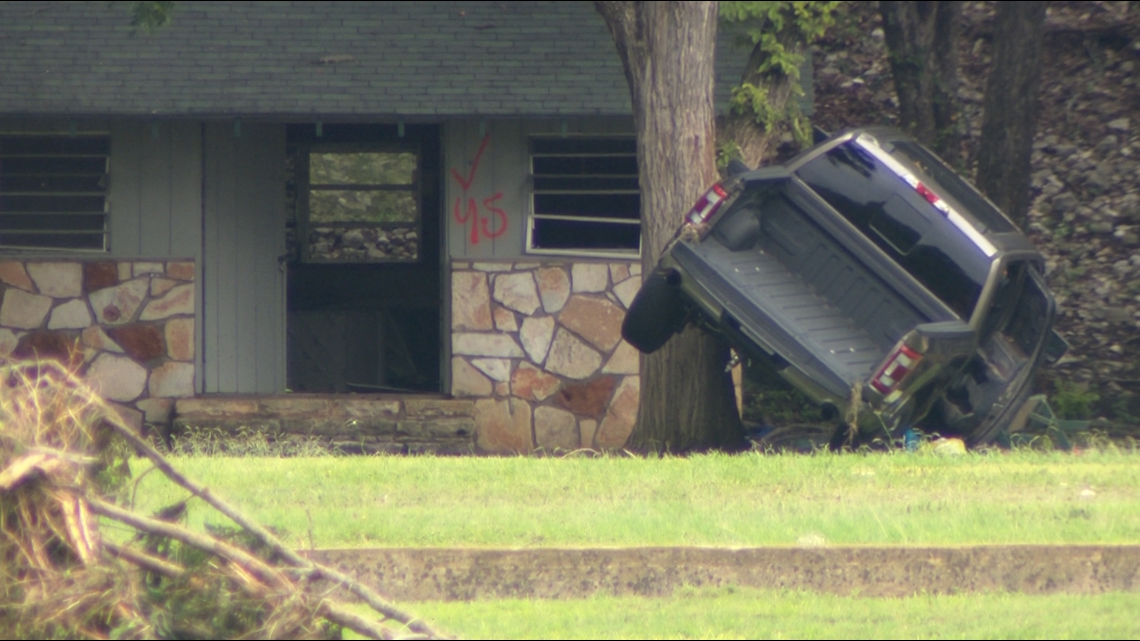
A state lawmaker asked if campers should be staying overnight in a flood plain. The answer he got was interesting.
AUSTIN, Texas — Camp Waldemar, located in Hunt, was directly in the path of the July Fourth flooding. A leader at the camp received a text at 1:30 a.m. alerting them to the danger.
Camp owner Meg Clark told lawmakers their staff were on high alert throughout the rest of the morning and they did move some canoes—but they didn’t move their kids out of the cabins.
Though, they didn’t need to move their kids. Clark testified at a Texas House of Representatives Culture, Recreation & Tourism committee meeting on Wednesday.
“All of our camper cabins, which are located above the river, did not take any flood water,” Clark said.
Camp Waldemar is close to the Guadalupe river but the cabins are on a bluff above the river. FEMA data shows those buildings are not located in any flood zone.
This begged a question, which Rep. Cody Vasut then asked:
“Should the legislature just have a standard that says, ‘You cannot have an overnight accommodation for minors in a flash flood plain?’ Do we need to be that specific?” Vasut asked.
The answer was not a resounding yes.
Vasut asked this as an open question to the three people testifying in front of the committee at that time: Dr. Timothy Stevenson from the Texas Department of State Health Services, Camp Waldemar owner Meg Clark and Steve Baskin, the Chairman of the American Camp Association.
Baskin also owns Camp Champions in the Marble Falls area.
“Prohibiting any bunkhouses in the floodplain would be a ‘failsafe mode.’ We would need statutory support for that,” Dr. Stevenson said.
Baskin answered the question of whether cabins in flood plains should be banned more specifically.
“I don’t think that’s the right rule to promulgate,” he said. “I think, if there is the ability, to differentiate between floods that rage different to floods that rise like bathwater, then that rule could be promulgated.”
Of course, a ban on cabins in floodplains could be a problem for Baskin and other camp owners. FEMA data shows a large part of Camp Champions is in a floodplain.
Most of the northern part of Camp Mystic, where young campers were swept away, is in a flood plain. Many of the buildings at Camp La Junta, where kids were escaping into the rafters, are in a flood plain.
At the same time, there are also different categories of flood plains with different risks.
A “regulatory floodway” has the highest risk. A “1% chance” floodway has an estimated risk of flooding every 100 years. A “0.2% chance” floodway has an estimated risk of flood every 500 years.
Camp Mystic had some buildings in the regulatory floodway, including a cabin. Camp Champion, on the other hand, is only in a 100 year and 500 year flood plains.
Baskin also pointed out that having cabins closer to water can sometimes keep them cooler and that he believed cabins would never be placed in a place that could experience a flash flood.
“If I thought a cabin was going to be washed away or get more than 18 to 20 inches of water I would not have a cabin there,” Baskin said.
Still, the July Fourth storms proved that “once in 500 year” floods do happen and they do take lives. Lawmakers will need to decide just how far they are willing to go to keep that from happening again.
